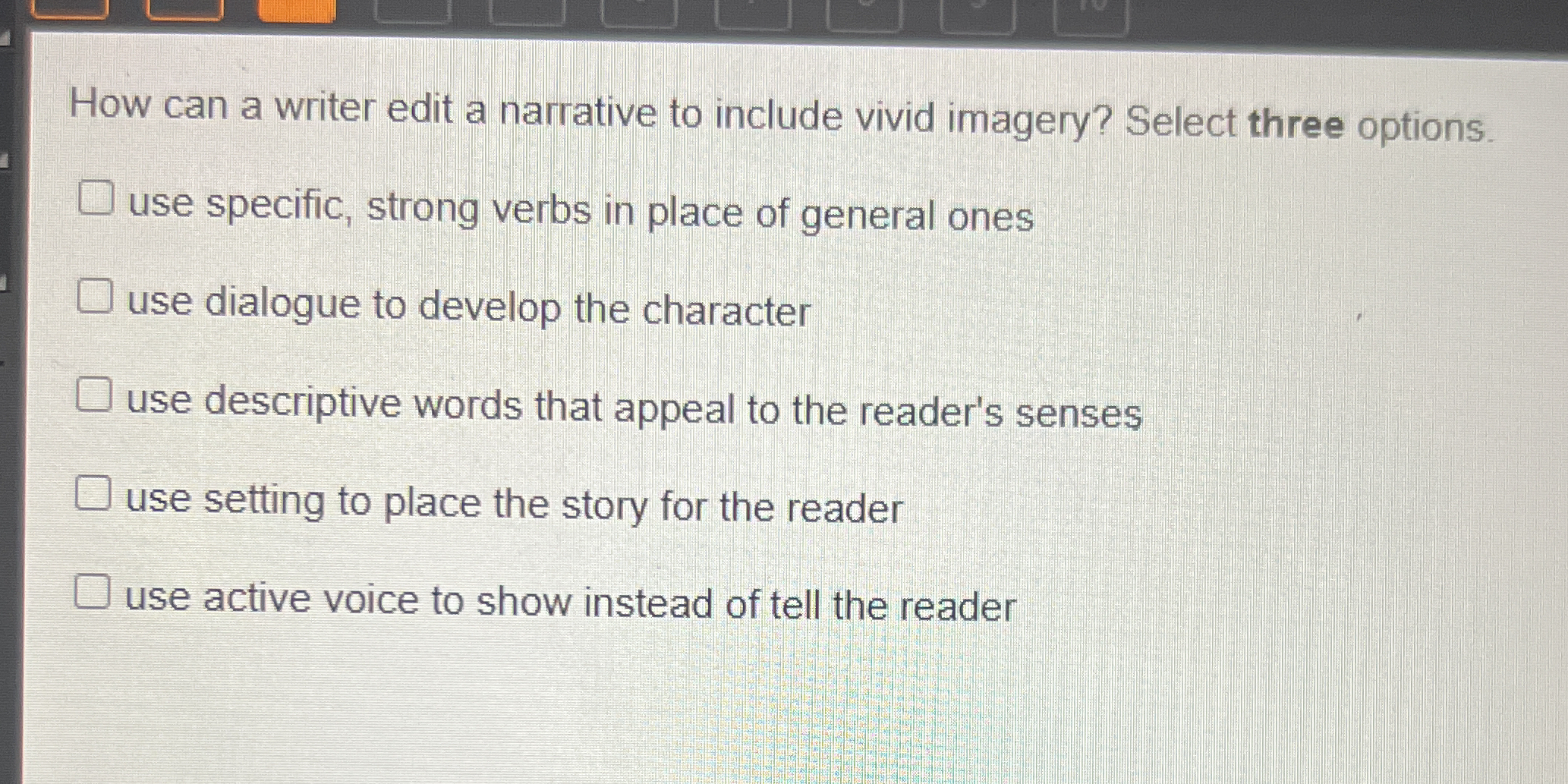How can a writer edit a narrative to include vivid imagery? Select three options.

Understand the Problem
The question asks about techniques a writer can use to edit a narrative in order to include vivid imagery. You must select which of the given editing options would help achieve this goal.
Answer
Use specific verbs, descriptive words appealing to senses, and active voice.
To include vivid imagery, a writer can use specific, strong verbs; use descriptive words that appeal to the reader's senses; and use active voice to show instead of tell the reader.
Answer for screen readers
To include vivid imagery, a writer can use specific, strong verbs; use descriptive words that appeal to the reader's senses; and use active voice to show instead of tell the reader.
More Information
Vivid imagery helps the reader to visualize the story, making it more engaging and memorable.
Tips
A common mistake is to select options that focus on character development or plot structure rather than those that directly create sensory experiences for the reader.
Sources
AI-generated content may contain errors. Please verify critical information